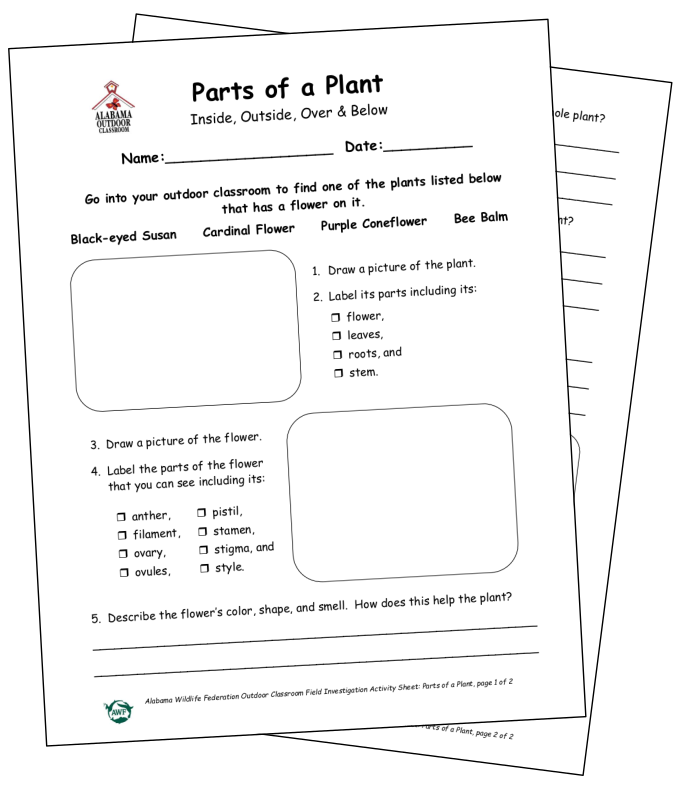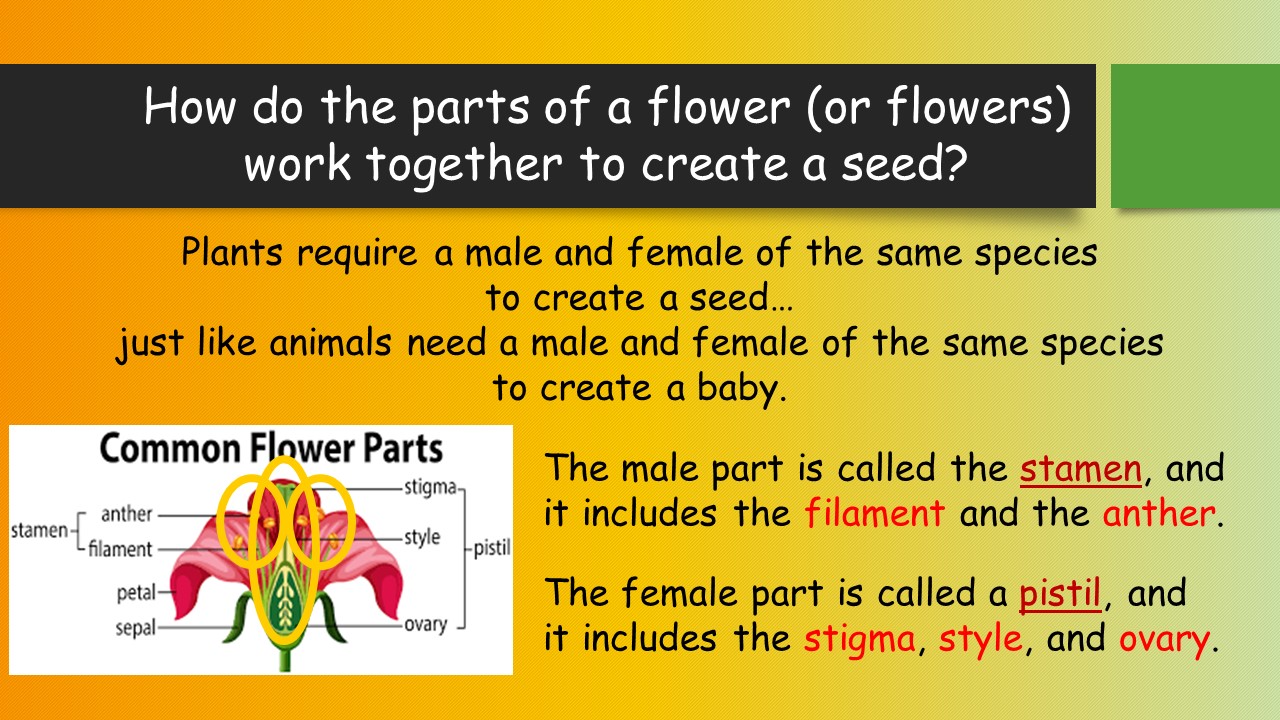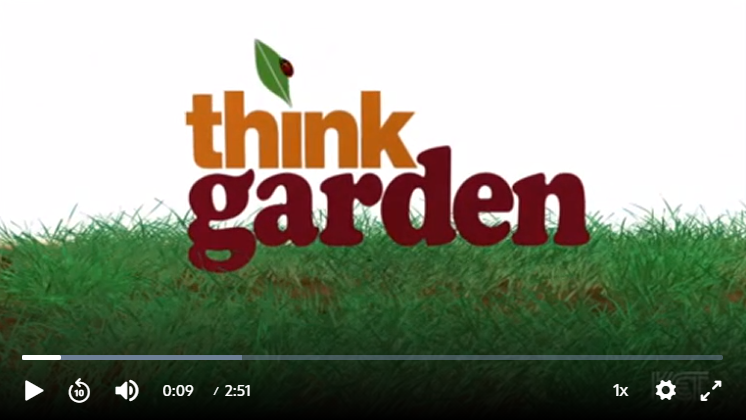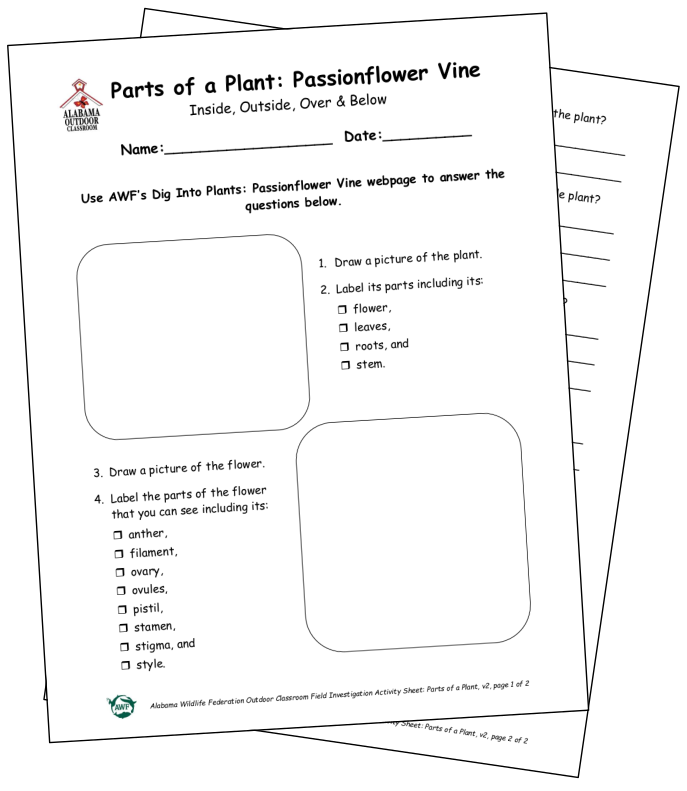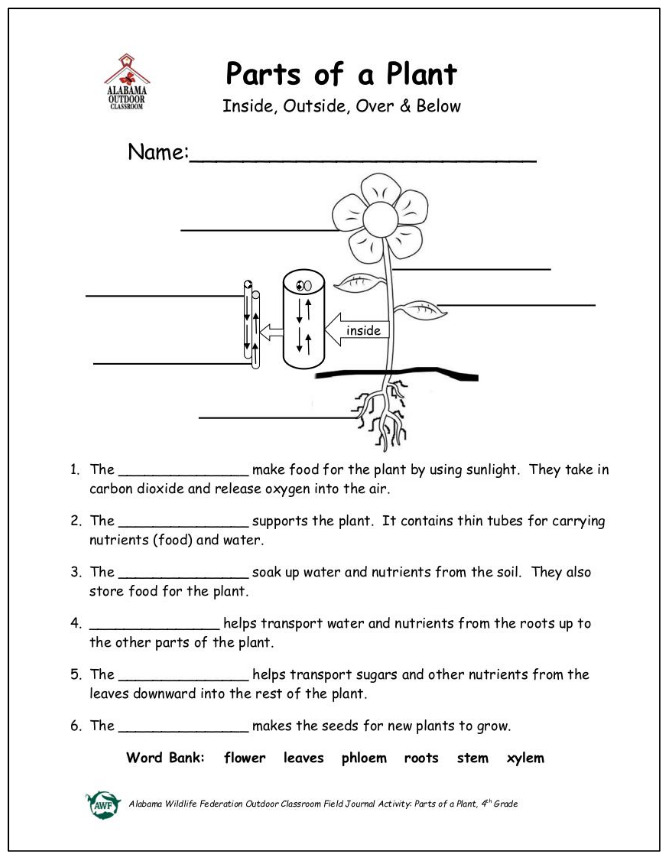Field Investigation: Parts of a Plant
Students will explore the outdoor classroom to find a plant with a flower to draw, label its parts, and answer questions about how its internal and external structures help the plant survive, grow, and reproduce.
Questions? Contact us at oc@alabamawildlife.org.
| Click on the orange links to access free educational materials: | |
| Lesson Plans | ALSDE Standards Taught | |
| Activity Page #1: Parts of a Plant (or as Word Doc) | |
| Activity Page #2: Parts of a Passionflower Vine (or as Word Doc) with Answer Page #2 | |
| Outdoor Activity Materials: activity pages, clipboards, pencils | |
|
Step 1: Engage through Discussion
|
|
| Engage the students and capture their interests with an Interactive Q&A (or as PDF) that allows you to click through the questions one at a time. You can gauge your students' understanding of the topic as they answer the questions. Print and use the Q&A Info Sheet (or as Word Doc) to anticipate the next question in the Interactive Q&A and to guide the conversation with the students. (Note: For the PowerPoint (PPT), click "Slide Show" & "From Beginning" to display the questions and answers separately.) | |
Use these tools to continue the discussion:
|
|
|
Step 2: Explore with Literature
|
|||
| As you read these books, you can further explore the topic and discuss your students' experiences and knowledge around the topic: From Seed to Plant by Gail Gibbons ISBN: 978-0823410255 Amazing Plant Powers: How Plants Fly, Fight, Hide, Hunt and Change by Loreen Leedy ISBN: 978-o823422562 |
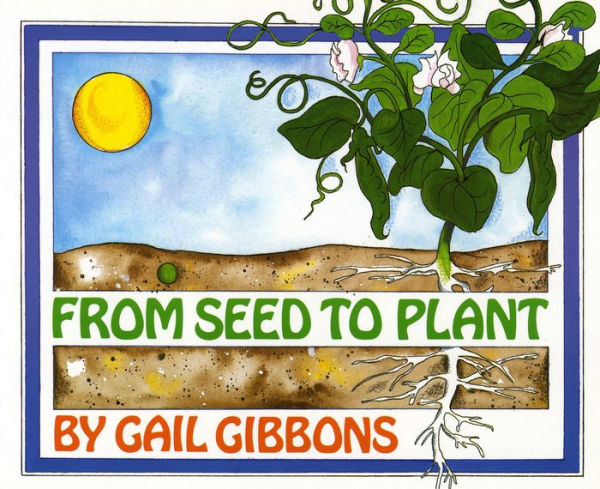 |
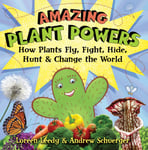 |
|
| Step 3: Explain with an Educational Video | |
| Use this educational video to help explain the topic in more detail: PBS’s Think Garden: Plant Structure (2:52 min.) @ https://www.pbslearningmedia.org/resource/5dea21b4-6c92-46ff-982c-8650f9429c01/think-garden-plant-structure/#.Wp2GmOjwY2w |
|
| Step 4: Elaborate with a Field Investigation in the Outdoor Classroom | |
| Students apply what they have learned as they investigate the topic in your outdoor classroom and record their real-world observations on their activity page: | |
| Version #1: Parts of a Plant |
Version #2: Parts of a Passionflower Vine |
Activity Tip:
|
|
| Version #1 - Parts of a Plant: General Plant Activity Page: PDF (as is) / Word Doc (as is) Procedure Indoor Discussion:
|
|
| Version #2 - Parts of a Passionflower Vine Activity Page: PDF (as is) / Word Doc (editable) Activity Tip
Procedure Indoor Discussion:
|
|
| Step 5: Evaluate with an Assessment Activity | ||
| Review and assess the students’ observations and answers on their observation pages:
Evaluate the students' understanding of the topic with the following assessment tool: Select a plant species you would like the students to use for this general activity sheet. Select from the list of plants on AWF's Dig Into Plants page. Use that species' webpage to check the answers on your students' activity sheets. |
||
Questions? Contact us at oc@alabamawildlife.org.
 Wildlife Tag
Wildlife Tag
